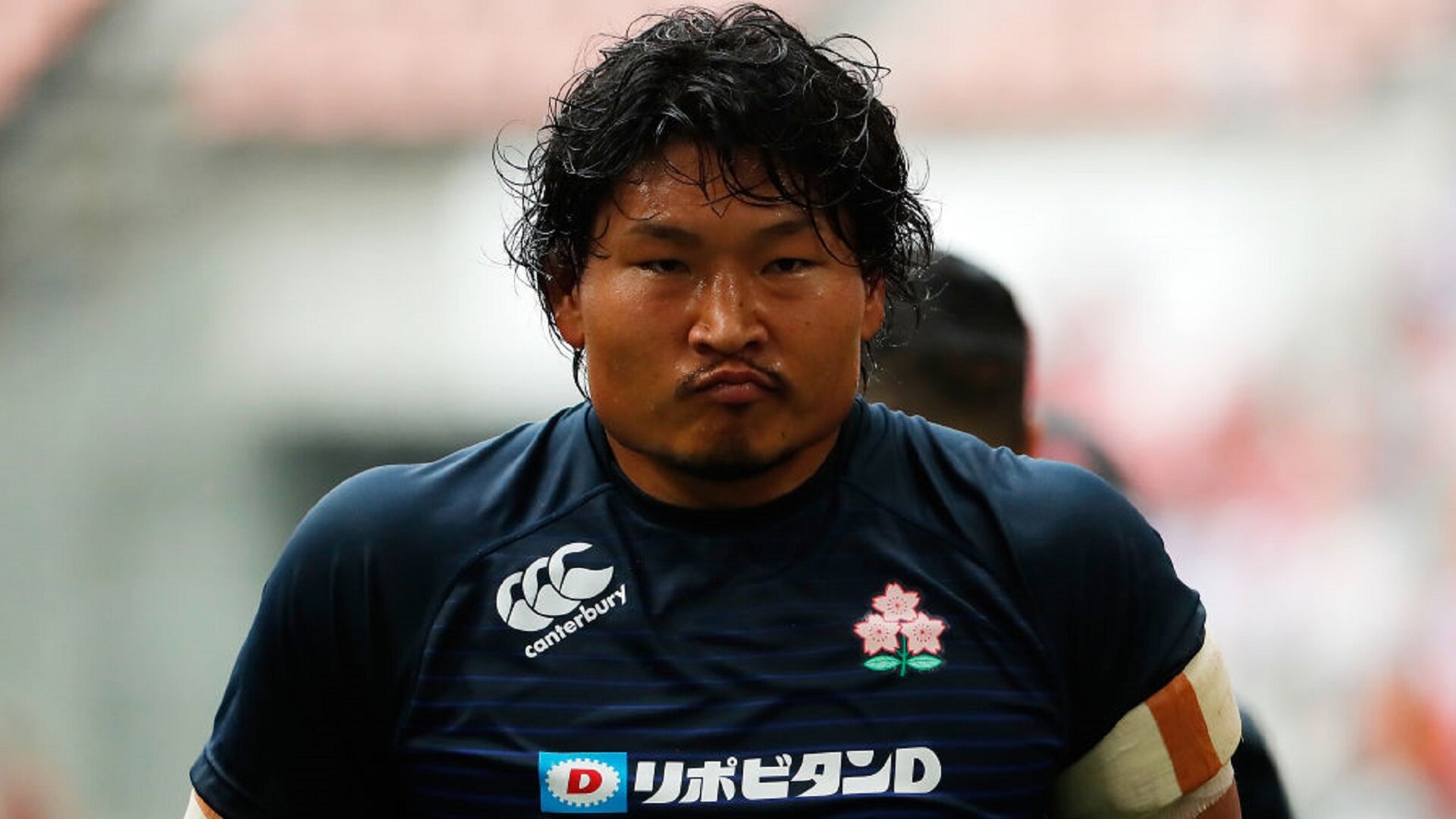Weaponised Japan scrum on revenge mission after previous Bok humbling

For the second Rugby World Cup in the row, Japan are boasting one of, if not the most efficient and influential scrum at the tournament, despite regularly giving up sizeable weight advantages to their opponents.
In England in 2015, it was Eddie Jones and Marc dal Maso’s swift set-piece that prioritised quick ball and would hook down channel one, with the No 8 shifting over to be between the flanker and feed-side lock, that set the Rugby World Cup alight. It was a vital component behind Japan’s now famous victory over South Africa and loosehead prop Keita Inagaki and hooker Shota Horie were both excellent proponents of it.
Four years later and Japan are once again preparing to play the Springboks, albeit this time under the tutelage of Jamie Joseph and former international front row Shin Hasegawa.
Whilst the challenge will be a considerable one once again for the Japanese pack, it’s not one that they should be shying away from, having taken on and triumphed against the Irish and Scottish forwards in recent weeks, despite having faced their fair share of struggles against South Africa in the Rugby World Cup warm-up game.
“That showed what happens when we don’t do what we’re intent on,” said Hasegawa.
“We’ve played four games since but there has never been a game we’ve been satisfied with our scrums throughout the 80 minutes. We need to have scrums that don’t give them a gap to exploit.
“I thought what was important was how many messages I can get across to the players, but Jamie [Joseph] said I was being too perfect. He said, let them do more by themselves, which will ingrain autonomy among them.
“He doesn’t actually say anything about the scrum in training. Now the players can adjust themselves during games. Sometimes I send a message across but they are already talking about it, so we’re heading in the right direction.”
Just as they did under dal Maso four years ago, however, the Japan scrum will not be coming into the game without an idea of how to disrupt and counter the much heavier Springbok pack.
“Details. We have all the patterns to deal with different situations and the players understand them. We’ll get stronger,” concluded Hasegawa.
Japan and Hasegawa have previously prepared for heavier packs by their starting eight practising against 10-man scrums, something which captain Michael Leitch heralded following Japan’s win over Ireland earlier in the pool stages. The starting tight five in that eight will largely pick itself heading into the contest with South Africa.
Inagaki, one of the heroes of Brighton, has been ever-present in Japan’s starting front row at the tournament, bringing technical proficiency to each of the four pool games. He has been spelled by the distinctive shock of blonde hair of Isileli Nakajima who, although he doesn’t bring the same prowess at the set-piece, offers an enviable physical presence as a ball-carrier. Given Nakajima only recently made the transition to the front row, that shouldn’t come as much of a surprise.
Horie was given a brief rest against Samoa, though the 33-year-old hooker has started the other three games of Japan’s Rugby World Cup so far and he will almost certainly be front and centre when Joseph announces his team to play South Africa. A lot can change in four years and the Springboks are certainly a different proposition to the one that showed up in Brighton in 2015, but the combination and effectiveness of Inagaki and Horie is unchanged and as formidable as ever.
Where the Japan scrum will face some uncertainty is on the tighthead, with Jiwon Koo, who started the crunch games against Ireland, Scotland and Samoa, leaving the field on Sunday with what looked like a rib injury. Should he be unavailable as expected, that will open the door for Asaeli Ai Valu, with the Panasonic Wild Knight set to join his club teammates Inagaki and Horie in the front row.
In the second row, James Moore, another ever-present so far for Japan, will likely pack down alongside one of Luke Thompson or Wimpie van der Walt. In the games against Ireland and Scotland, Thompson was the man chosen to partner Moore and the 38-year-old has rolled back the years so far at the tournament. They may not provide the most ballast of any second rows in international rugby, although the Japan scrum has not been hurt as a result.
A few positional changes… (Special mention to the whole Japanese team) #RugbyWorldCup #rwc2019 pic.twitter.com/JdFW3AQBnD
— RugbyPass (@RugbyPass) October 15, 2019
Once again, the Brave Blossoms will look to avoid engaging in a physical arm wrestle with the South Africans, in what would be a move that would play into all the strengths of Rassie Erasmus’ squad. Some of the personnel may have changed since that famous night in Brighton, but the game plan won’t have. As it has throughout this tournament for Japan, it will be all about pace, tempo and an eagerness to move their opponents around.
From a scrum perspective, Hasegawa is likely preparing his charges to get the ball in and out as quickly as possible, not only to negate South Africa’s brute strength upfront, but also to unleash the threats of Kenki Fukuoka and Kotaro Matsushima out wide, a tactic that not only saw off the Boks in Brighton, but also Ireland in Shizuoka much more recently.
Watch: Fans are divided over where Japan’s future should reside in international rugby































